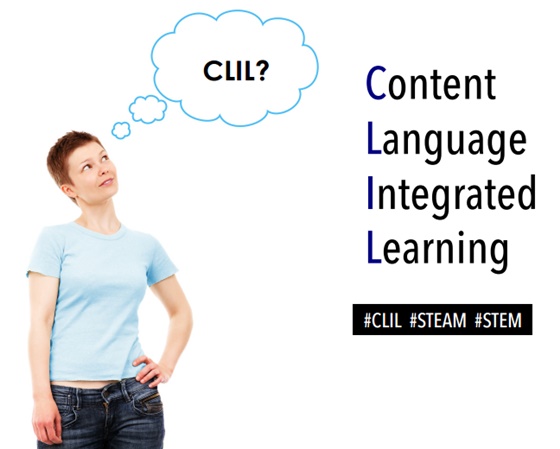CLIL is a teaching approach where language and content are taught together, allowing students to learn English through the lens of other subjects. For example, instead of teaching vocabulary in isolation, a TESOL teacher might explore scientific vocabulary while discussing the water cycle or historical terms while learning about ancient civilizations. This integrated approach provides contextualized learning, where students practice English skills while absorbing knowledge in other areas.
Benefits of CLIL
- Authentic Learning: Students learn English in context, making it more applicable and memorable.
- Increased Engagement: By linking language with real-world content, students are more motivated to learn.
- Critical Thinking: CLIL encourages students to think critically about content in English, rather than memorizing rules and vocabulary in isolation.
- Cultural Awareness: In subjects like geography and history, CLIL provides opportunities for cross-cultural learning, broadening students’ perspectives.
Ways to Implement CLIL in the TESOL Classroom
Here are practical ways TESOL teachers can use CLIL to enhance English instruction:
1. Integrate Science and Language Learning
Teaching English through science topics like ecosystems, space, or animal adaptations can make language learning exciting. For example, a lesson on the “Water Cycle” could introduce vocabulary like “evaporation,” “condensation,” and “precipitation” while encouraging students to describe processes in English.
- Activity: Present the water cycle visually, using diagrams or animations. Have students label each part of the cycle and describe it in sentences, reinforcing vocabulary and sentence structure simultaneously.
- Tip: Use simple experiments, like the “cloud in a jar,” to visually illustrate scientific principles, allowing students to describe the process and discuss observations in English.
2. Explore History through English
History offers a rich context for vocabulary and language practice. A lesson on Ancient Egypt, for example, can introduce terms like “pharaoh,” “pyramid,” and “hieroglyphics,” while encouraging students to form sentences describing historical events or daily life.
- Activity: Create a timeline of events where students describe each milestone in English, practicing verb tenses and descriptive language. Role-playing historical figures also helps students practice dialogue, making language more interactive.
- Tip: Ask students to present a historical figure or event in English, allowing them to practice speaking skills and learn history in an engaging way.
3. Math in English: Learning Numbers, Shapes, and Measurements
Math can be a surprisingly effective subject for teaching English, as it allows students to practice counting, spatial awareness, and measurements in a practical setting. For instance, while teaching geometry, students can learn terms like “triangle,” “rectangle,” “angle,” and “perimeter.”
- Activity: Have students measure items around the classroom and describe their findings using English vocabulary. Phrases like “The desk is 1.5 meters long” or “This shape has four sides” allow students to practice math terms and measurement vocabulary.
- Tip: Introduce comparison language with activities like “taller than” or “shorter than,” and have students describe differences between objects.
4. Literature and Language
Using literature to teach English allows students to explore new vocabulary and improve reading comprehension through storytelling. Reading short stories, folk tales, or even science fiction can spark curiosity and engagement.
- Activity: Choose a short story, such as a fable or fairy tale, and ask students to identify key themes and characters. Then, hold a discussion in English about the story’s moral or message, encouraging students to express their thoughts in full sentences.
- Tip: Pair students for “dialogue practice,” where they act out parts of the story to build conversational skills while reinforcing vocabulary.
5. Geography and Language Learning
Geography lessons offer endless possibilities for teaching English in context. Exploring different countries, climates, and landmarks introduces students to terms that describe the environment, locations, and even culture.
- Activity: Create a “World Map” exercise where students learn about different countries and capitals, climates, or famous landmarks. They can use phrases like “In France, they speak French” or “Mount Everest is in the Himalayas.”
- Tip: Encourage students to research and present a country in English, describing its landscape, famous landmarks, and climate, reinforcing geographical vocabulary and presentation skills.
6. Art and Creative Language Use
Art-based lessons allow students to express themselves in English through visual and descriptive language. By discussing famous artworks, colors, or artistic techniques, TESOL teachers can introduce students to vocabulary for describing shapes, colors, and feelings.
- Activity: Show a famous painting and ask students to describe what they see. Questions like “What colors are used?” or “How does this painting make you feel?” allow students to practice adjectives and expressive language.
- Tip: Have students create their own artwork and write a short description in English, practicing both artistic vocabulary and sentence structure.
Tips for a Successful CLIL Classroom
- Simplify Language: Adjust vocabulary and syntax based on students’ proficiency level, making it easy for them to engage with the content without being overwhelmed.
- Use Visuals and Real Objects: Visual aids, real-life objects, and multimedia resources make learning more interactive and aid comprehension.
- Encourage Collaboration: Group activities help students communicate ideas, solve problems, and build teamwork skills, all in English.
- Use Scaffolding Techniques: Start with basic language and gradually introduce more complex concepts. For example, begin with vocabulary before moving into full sentence descriptions.
- Assess Both Language and Content Understanding: Use quizzes or discussions to check students’ comprehension of both language and subject matter.
Final Thoughts
Content Language Integrated Learning (CLIL) offers TESOL teachers a versatile approach to teaching English, helping students learn language skills while exploring subjects they are passionate about. By blending content with language instruction, CLIL creates a dynamic and meaningful classroom experience where students can develop English proficiency while expanding their knowledge across different fields. Whether exploring history, art, or science, TESOL teachers using CLIL can cultivate curiosity, confidence, and communicative competence in their students, making language learning both practical and inspiring.



